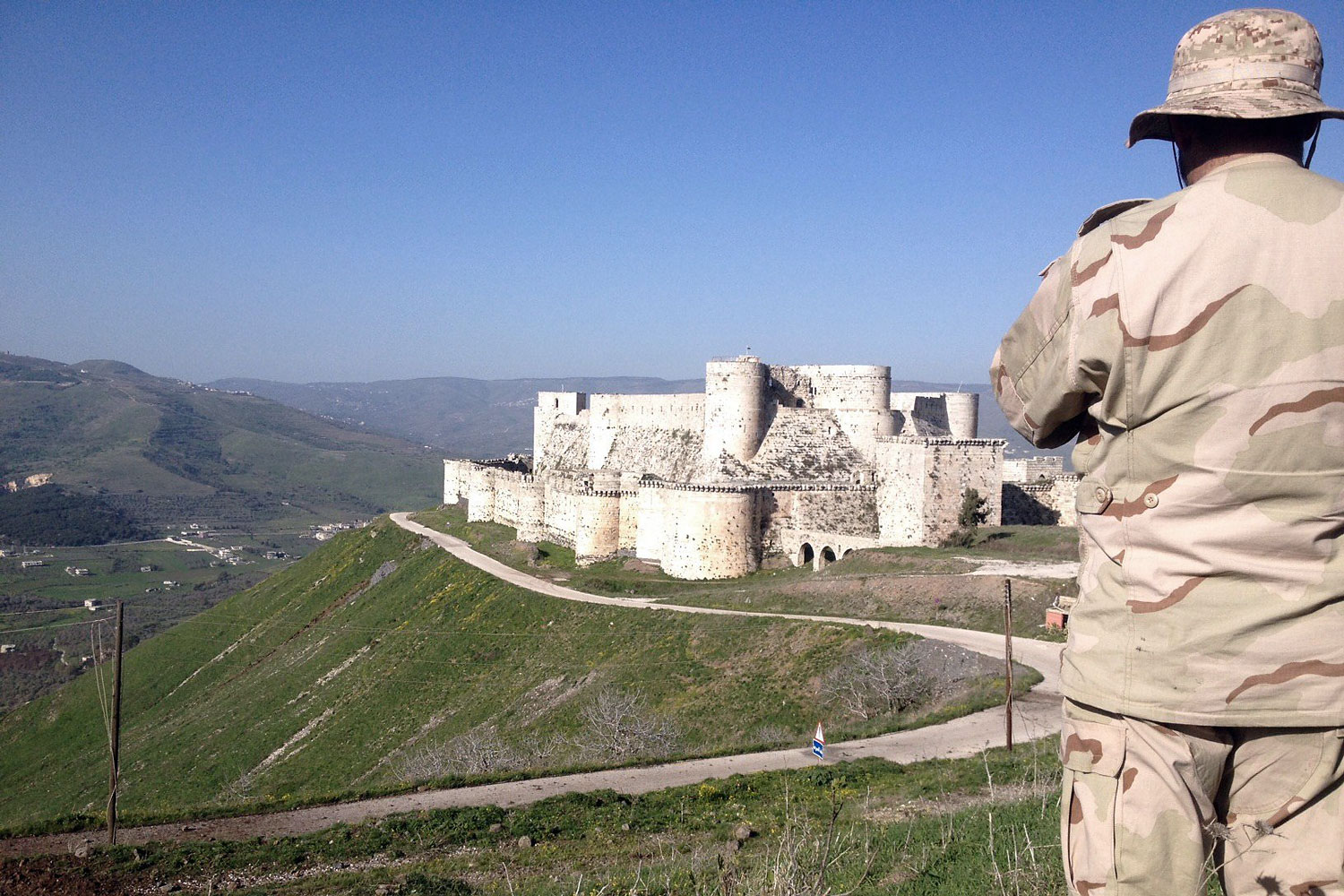
The gray stone crusader fortress Krak des Chevaliers has dominated the principal road from the ancient Syrian capital Damascus to the sea for 900 years, changing hands multiple times over the centuries as rival armies have vied for its strategic location. On Thursday the Syrian army retook the hilltop citadel, 25 miles from the city of Homs, from a ragtag group of rebels who had held it for nearly two years. By Thursday evening the two-starred flag of President Bashar Assad’s government flew from the ramparts. Regime forces were well on their way towards reclaiming a swathe of territory linking Damascus to the coastal province of Latakia, forming the backbone of what could eventually be a rump state governed by Assad’s forces should the country fracture along sectarian lines.
For weeks the Syrian army had laid siege to some 500 rebels holed up inside, echoing tactics used by the 13th century Islamic Mamluk dynasty when it finally wrested control of the castle from the Knights Hospitaller, who built it 130 years before. This most recent siege ended with a bout of intense clashes that finally succeeded in driving the rebels out. Pro-government television stations showed Syrian soldiers exploring the castle, a UNESCO World Heritage site, accompanied by the sound of celebratory gunfire.
The fate of the Krak des Chevaliers, considered to be one of the world’s best-preserved crusader castles, is but one example of the damage that Syria’s three-year war has wrought on the country’s wealth of historical sites. But as a site built to withstand military attack, it may yet survive the war relatively intact, unlike Syria’s more fragile Roman, Greek and Byzantine archaeological sites. Last week UNESCO warned that Syria’s historic Muslim and Christian sites were under attack and called for an immediate halt to the destruction of the country’s historical heritage. From an archaeological preservation point of view, the military’s success may have the unintended consequence of preserving the site — at least for now.
In its attempt to take the castle during the preceding months, the Syrian military attacked the site several times with aerial bombardments, notes Emma Cunliffe, an archaeologist at Britain’s Durham University. “The main damage to the castle has come from the air strikes, so it will be protected from them now,” says Cunliffe, who specializes in historic sites under threat and recently released a survey on Syria’s cultural heritage in conflict for the Global Heritage Fund, an organization that seeks to preserve imperiled historic sites. But the citadel, with its commanding position over key transit points, and important rebel resupply lines, is unlikely to stay uncontested for long. Whether the site stays out of danger is largely dependent on the rebel’s next move, says Cunliffe, like “what ordnance the rebels have access to and whether they will fight to retake it.”
It may already be too late for the rebels. Assad’s forces have consolidated gains all along the Lebanese border, capturing the strategic town of Yabroud last Sunday as well as several other towns and villages that formed a vital support network for the rebels over the past few weeks. The capture of Krak des Chevaliers pales in comparison to the loss of Yabroud in terms of impact on rebel forces. Yet the Syrian government flag waving from a castle tower that can be seen for miles is a potent symbol of defeat that even the original inhabitants would well understand.
More Must-Reads from TIME
- Donald Trump Is TIME's 2024 Person of the Year
- Why We Chose Trump as Person of the Year
- Is Intermittent Fasting Good or Bad for You?
- The 100 Must-Read Books of 2024
- The 20 Best Christmas TV Episodes
- Column: If Optimism Feels Ridiculous Now, Try Hope
- The Future of Climate Action Is Trade Policy
- Merle Bombardieri Is Helping People Make the Baby Decision
Contact us at letters@time.com